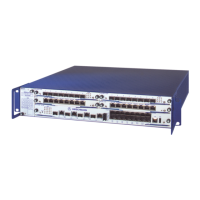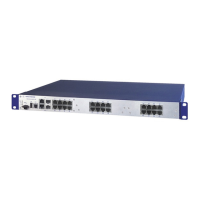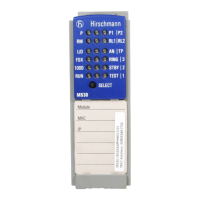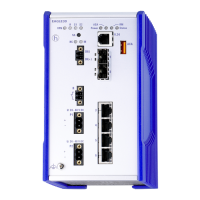Entering the IP Parameters
22
2.6
System configuration via DHCP
Basic - L3P
Release
4.0
11/07
The special feature of DHCP in contrast to BOOTP is that the DHCP server
can only provide the configuration parameters for a certain period of time
("lease"). When this time period ("lease duration") expires, the DHCP client
must attempt to renew the lease or negotiate a new one. A response similar
to BOOTP can be set on the server (i.e. the same IP address is always as-
signed to a particular client using the MAC address), but this requires the ex-
plicit configuration of a DHCP server in the network. If this configuration was
not performed, a random IP address – whichever one happens to be avail-
able – is assigned.
On delivery, DHCP is activated.
As long as DHCP is activated, the Switch attempts to obtain an IP address.
If it cannot find a DHCP server after restarting, it will not have an IP address.
To activate/deactivate DHCP (see on page 25 "System configuration via the
Web-based interface").
Note: When using HiVision network management, ensure that DHCP always
assigns the original IP address to each Switch.
In the appendix under "Setting up DHCP/BOOTP server" on page 200 you
will find an example for the configuration of a BOOTP/DHCP server.
Example of a DHCP configuration file:
# /etc/dhcpd.conf for DHCP Daemon
#
subnet 149.218.112.0 netmask 255.255.240.0 {
option subnet-mask 255.255.240.0;
option routers 149.218.112.96;
}
#
# Host berta requests IP configuration
# with her MAC address
#
host berta {
hardware ethernet 00:80:63:08:65:42;
fixed-address 149.218.112.82;
}
#
# Host hugo requests IP configuration
# with his client identifier.
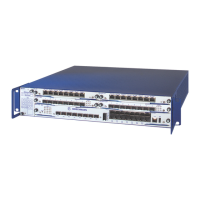
